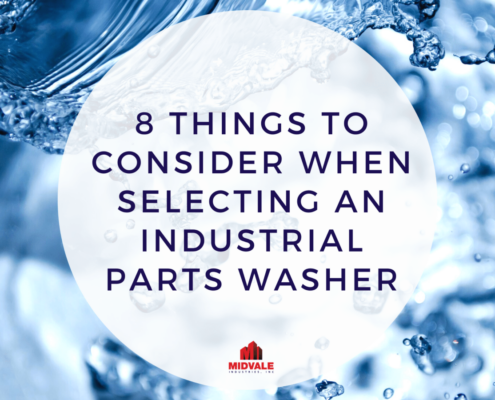 https://midvaleindustries.com/wp-content/uploads/2024/08/8-Things-To-Consider-When-Selecting-an-Industrial-Parts-Washer-1.png
900
1600
Nate Riggins
/wp-content/uploads/2024/06/Midvale-Logo-Web-Black.png
Nate Riggins2023-04-17 16:07:252025-07-10 09:13:508 Things To Consider When Selecting An Industrial Parts Washer
https://midvaleindustries.com/wp-content/uploads/2024/08/8-Things-To-Consider-When-Selecting-an-Industrial-Parts-Washer-1.png
900
1600
Nate Riggins
/wp-content/uploads/2024/06/Midvale-Logo-Web-Black.png
Nate Riggins2023-04-17 16:07:252025-07-10 09:13:508 Things To Consider When Selecting An Industrial Parts WasherHow to prepare your cleaning process to be compliant for future regulations
Update (Aug 22, 2024): The EPA has finalized a ban on most uses of methylene chlorida. It will be fully phased out for all consumer sale by May 5, 2025 and most industrial and commerical sale by April 28, 2026. Exempt companies will have up to 18 months to establish a clear employee protection plan.
Parts cleaning is an important part of the manufacturing industry. For a long time, chemicals and solvents have been a staple in these processes. These solvents provide many benefits to the cleaning application. However, the U.S. Environmental Protection Agency (EPA) and the Occupational Safety and Health Administration (OSHA) are seeking to establish new regulations regarding the use of chemicals, both old and new, under the Toxic Substances Control Act (TSCA). In an effort to increase worker safety, the EPA has been working to eliminate the use of harmful chemicals in industrial process.
Many harmful cleaning solvents contain Volatile Organic Compounds (VOCs), which are sizable collections of carbon-based chemicals that evaporate into the air. This can compromise worker safety due to the harmful effects of inhaling certain chemicals in the work area. This article serves to help manufacturers maintain OSHA compliance on cleaning solvents regulations.
Common symptoms of short-term exposure to high levels of chemicals are:
- Eye, nose and throat irritation
- Headaches
- Nausea / Vomiting
- Dizziness
- Worsening of asthma symptoms
- Chemical burns
Common symptoms for long-term exposure to high levels of chemicals are:
- Cancer
- Liver Damage
- Kidney Damage
- Central Nervous System Damage
In June of 2018, EPA published documents that detail the risks of commonly used and harmful chemicals under the Toxic Substances Control Act (TSCA). In 2020, the EPA issued the “Final Chemical Risk Evaluations” for various solvents. Most evaluated chemical assessments contain direct statements that the EPA has determined, “use of these substances presents unreasonable risk to human health”. Several commonly used degreasing solvents were listed in the report:
- 1 Bromopropane (nPB)
- Methylene Chloride (MC)
- N-Methyl pyrrolidone (NMP)
- Perchloroethylene (PERC)
- Trichloroethylene (TCE)
In January 2022, the EPA released a proposed screening method for public comment and peer review. This was done with intentions to evaluate the potential exposures and associated risks with surrounding communities. The next steps required by the TCSA is to develop a plan to reduce and/or eliminate the risks associated with these solvents. A final rule is expected in the near future, but there are some states that are taking matters into their own hands and banning certain chemicals. Being proactive will save companies in the long run.
Planning Ahead for Regulations
While in a waiting period for a pending solution to these harmful chemicals, the suggestion is to take action now. Not only are the solvents in question harmful to the environment and people, they may soon come with a hefty fine for their use. It’s vital to be diligent in preparing a plan for compliance. If no plan is put in place for the pending regulations, then you’ll be left scrambling to make fast and expensive changes without the luxury of time to plan accordingly. There are multiple options that you can consider when looking into compliance including:
Aqueous Cleaning Process
Aqueous cleaning provides a great cleaning option for a variety of processes. But can often be limited by the types of metal and contaminants each unit can clean. This can increase the floor space being used in cleaning processes.
- No need for solvents that can be harmful to the environment or workers. Capabale of effectively cleaning using less harmful detergents, inhibitors and other solutions.
- Very effective with water soluble contaminants.
- Can plug into a facility to allow parts to continuously flow throughout processing.
- Types of equipment include cabinet, conveyor, indexing, monorail, rotary, or drum parts washers.
Convert to Alternate Solvent
Partner with your solvent or chemistry supplier, or utilize our lab, to test various solvents that can work in your process.
Convert to Vacuum Degreasing Technology
Vacuum degreasing technology is quickly growing as one of the most efficient and environmentally friendly processes for cleaning parts. Learn more about vacuum vapor degreasing here.
Benefits to the Vacuum Degreasing Process
Degreasing cleaning systems are ideal for applications where oil has been used in the machining of the parts. Water-soluble coolants aren’t as effective as the oil-based solvents when cleaning these machined components. Here are some other benefits of degreasing cleaning systems:
- Low Emissions
- Low Chemical Consumption
- Reduced energy use
- Fully enclosed cleaning chamber – reducing EHS concerns
- Parts are dried in the cleaning chamber, no separate stage needed
- Greatly reduced operator exposure
- Reduced maintenance and downtime
- Reclaim clean and dry chips and fines
- Reclaim cutting oils for reuse
Recommended Replacement Solvents
- Modified Alcohols
- HFOs
- HFEs
- Refined Hydrocarbons
- Trans Blends
Benefits to these solvents:
- Highest PEL Limits for Personnel Safety
- Lowest Global Warming Potential
- Lowest Surface Tension
- VOC FREE or Very Low Rating
- Non-flammable
- Carbon Footprint Contribution
- Operation Temperature
- Multi-metals / Lubes Compatibility
- Rapid Drying – Generally Residue Free
- Stability
Things you should consider when looking at compliance:
Staying compliant with OSHA and EPA standards will help avoid forced shutdowns, fines, and health concerns of employees. There are a lot of factors you need to consider when looking to make a change in your cleaning processes. Here is a breakdown of some of the things you need to take into consideration to plan your transition.
EHS Concerns – What changes do you need to ensure all operators and employees near the operations remain safe before, during, and after the change in application.
Production Flow – What is the current production flow of parts through the cleaning process and how will a new piece of equipment affect the flow? What is the current cycle time compared to the new cycle time post-conversion?
Production Shutdown – A transition will most likely cause a production shutdown. This will be affected by a number a factors including the amount of time to remove and install new equipment, set up time, and calibration. If just switching chemistry, shutdowns will most likely be shorter, but knowing how long you’ll be down is important for planning production goals.
Total cost – The cost involved in transitioning your cleaning process has a lot of components including the cost of new equipment, change in cost of the chemistry and transportation, change in energy usage for the new process, and waste disposal for different solvents.
If you’re still using harmful chemicals iny our cleaning process, contact our team today and discuss OSHA compliance and worker safety. Our team will find the best process for your cleaning requirements.
Share This Post
More Like This
 https://midvaleindustries.com/wp-content/uploads/2024/08/8-Things-To-Consider-When-Selecting-an-Industrial-Parts-Washer-1.png
900
1600
Nate Riggins
/wp-content/uploads/2024/06/Midvale-Logo-Web-Black.png
Nate Riggins2023-04-17 16:07:252025-07-10 09:13:508 Things To Consider When Selecting An Industrial Parts Washer
https://midvaleindustries.com/wp-content/uploads/2024/08/8-Things-To-Consider-When-Selecting-an-Industrial-Parts-Washer-1.png
900
1600
Nate Riggins
/wp-content/uploads/2024/06/Midvale-Logo-Web-Black.png
Nate Riggins2023-04-17 16:07:252025-07-10 09:13:508 Things To Consider When Selecting An Industrial Parts Washer


